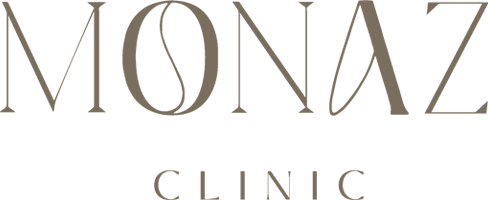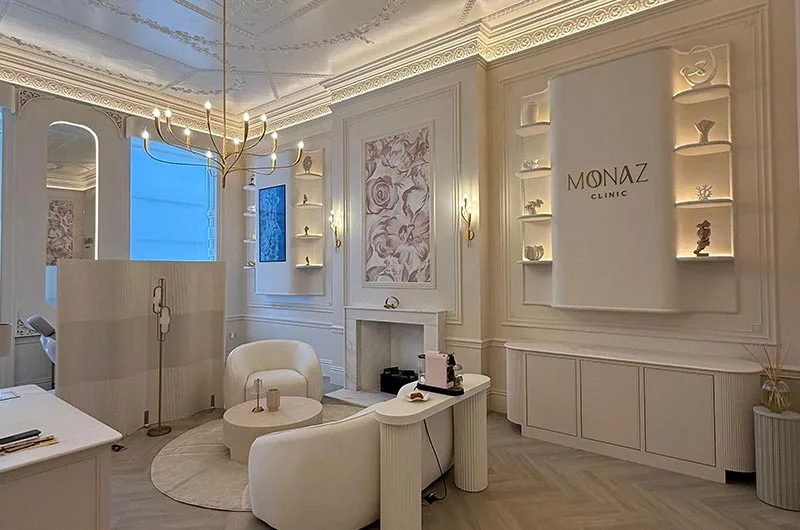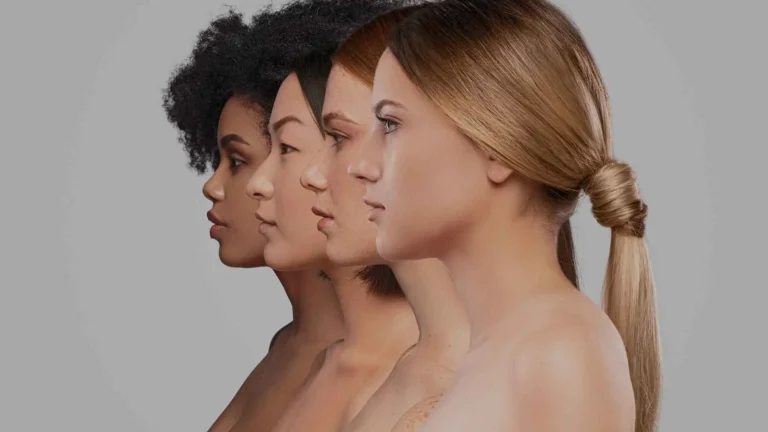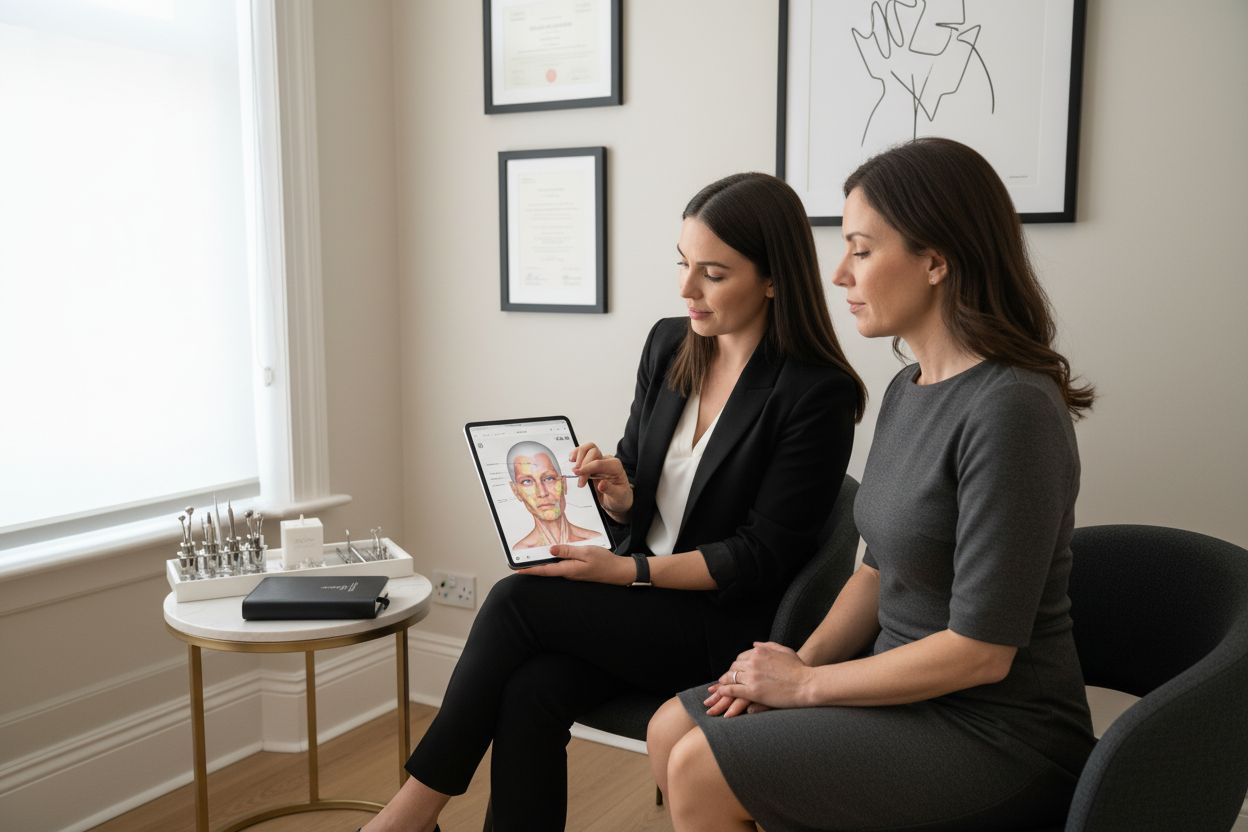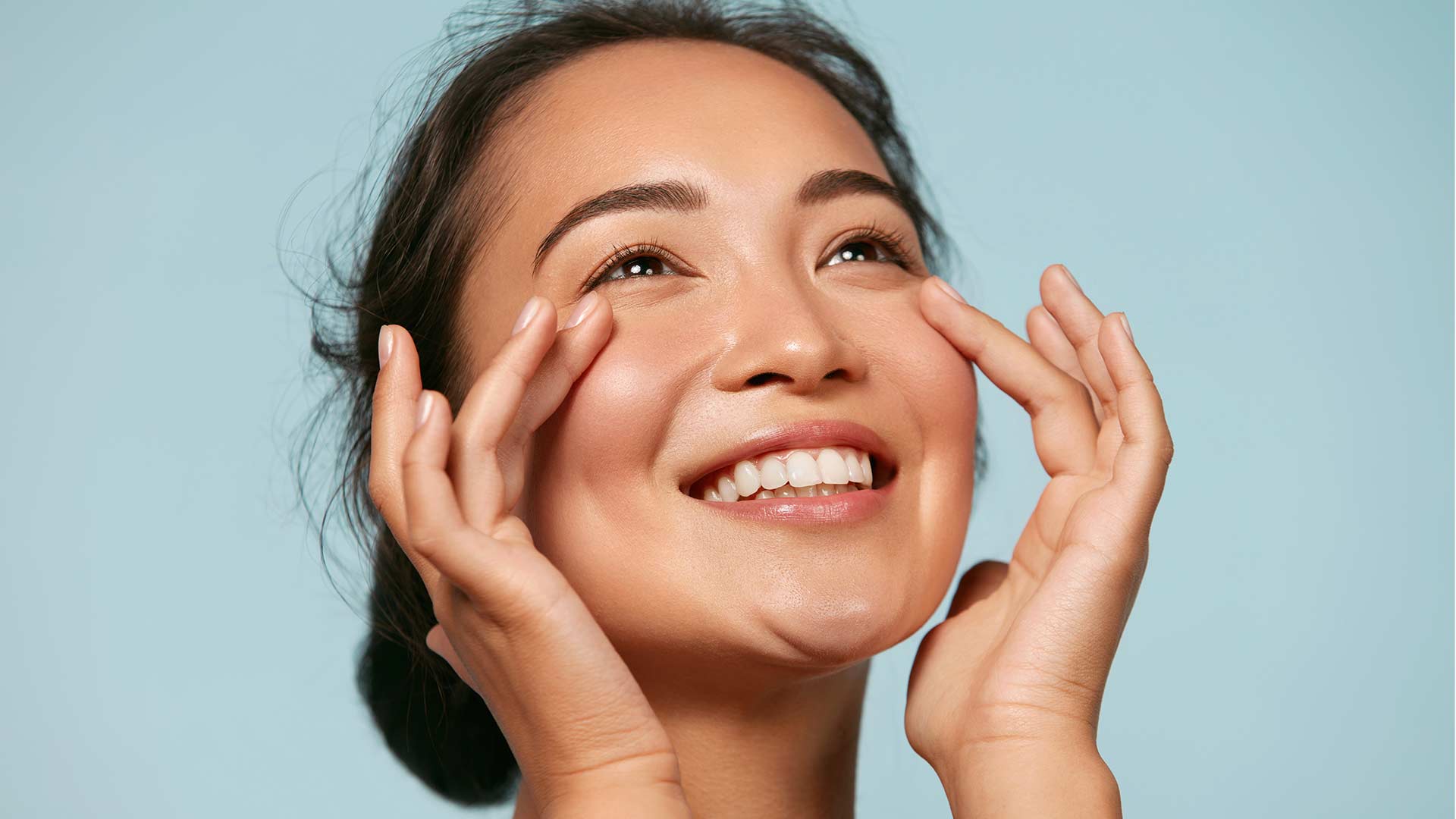Facial harmonisation guide: definitions, types, process, safety regulations, and what to expect from expert-led, non-surgical procedures in London.
Studies show that over 75 percent of people feel their confidence is affected by how balanced their facial features appear. The way our face looks can influence first impressions, self-esteem, and even how we interact with others. Facial harmonisation now offers a modern, gentle path to achieving natural balance and symmetry. Discover how specialised treatments can help refine your features while celebrating your individuality.
Table of Contents
- Defining Facial Harmonisation And Core Concepts
- Types Of Non-Surgical Harmonisation Treatments
- The Treatment Process And Expected Outcomes
- Safety, Medical Standards, And Uk Regulations
- Potential Risks, Recovery, And Common Mistakes
Key Takeaways
| Point | Details |
|---|---|
| Facial Harmonisation Focus | Emphasizes subtle enhancements for balanced, natural facial proportions rather than dramatic alterations. |
| Personalised Treatment Plans | Involves comprehensive consultations to create tailored treatment strategies based on individual facial characteristics. |
| Non-Surgical Options | Offers various minimally invasive treatments with minimal recovery time, enhancing facial symmetry and features. |
| Safety and Regulation | Patients should verify practitioner qualifications and adhere to safety protocols to minimize treatment risks. |
Defining Facial Harmonisation and Core Concepts
Facial harmonisation represents a sophisticated aesthetic approach focused on creating balanced, natural-looking facial proportions that enhance an individual’s unique features. Unlike traditional cosmetic procedures that might dramatically alter appearance, facial harmonisation aims to subtly refine and restore symmetry through precision treatments. This holistic method considers the intricate interplay between facial structure, individual genetic characteristics, and aesthetic goals.
According to research exploring facial morphology, our genetic inheritance plays a significant role in determining facial structure and potential variations. Understanding What is Facial Harmonisation reveals that harmonisation treatments strategically address these natural variations, creating a more balanced and aesthetically pleasing result. The core principles involve:
- Analyzing individual facial proportions
- Identifying asymmetries or structural imbalances
- Developing customised treatment plans
- Using minimally invasive techniques
- Preserving natural facial expressions
The philosophy behind facial harmonisation transcends simple cosmetic enhancement. It represents a nuanced understanding that beauty emerges from proportion, balance, and individual uniqueness. By considering each patient’s distinctive facial anatomy, practitioners can create subtle yet transformative results that look authentic and harmonious. The goal is not to completely redesign one’s appearance, but to gently optimise and refine natural features.
Types of Non-Surgical Harmonisation Treatments
Non-surgical facial harmonisation treatments represent a sophisticated approach to aesthetic enhancement, offering patients minimally invasive options that can dramatically improve facial balance and symmetry. According to government research, these procedures encompass a range of innovative techniques designed to refine and rejuvenate facial features without traditional surgical intervention.
According to the 7 Top Non-Invasive Treatments for Facial Aesthetics guide, the primary non-surgical harmonisation treatments include:
Here’s a comparison of the primary non-surgical facial harmonisation treatments:
| Treatment Type | Main Purpose | Key Benefits | Typical Recovery |
|---|---|---|---|
| Dermal Fillers | Restore volume, smoothness | Enhanced contours Natural look | Minimal downtime |
| Thread Lifts | Lifting, tightening | Subtle lift Immediate result | 1-3 days |
| Microneedling | Improve skin texture | Boosts collagen Radiant skin | 1-2 days |
| Radiofrequency Treatments | Skin tightening | Reduces ageing Non-invasive | None |
| Muscle Relaxing Injections | Soften lines, balance | Smooths wrinkles Subtle effects | Few hours |
- Dermal Fillers: Strategically injected to restore volume and smooth contours
- Thread Lifts: Minimally invasive technique for subtle facial lifting
- Microneedling: Stimulates collagen production and improves skin texture
- Radiofrequency Treatments: Tightens skin and reduces signs of aging
- Muscle Relaxing Injections: Softens dynamic wrinkles and balances facial movements
Research from the UK government highlights that these non-surgical cosmetic procedures offer precise interventions that can address specific aesthetic concerns. Unlike traditional surgical methods, these treatments provide nuanced enhancements with minimal recovery time. Each technique is carefully selected based on individual facial structure, ensuring a personalised approach that maintains natural facial expressions and unique characteristics.
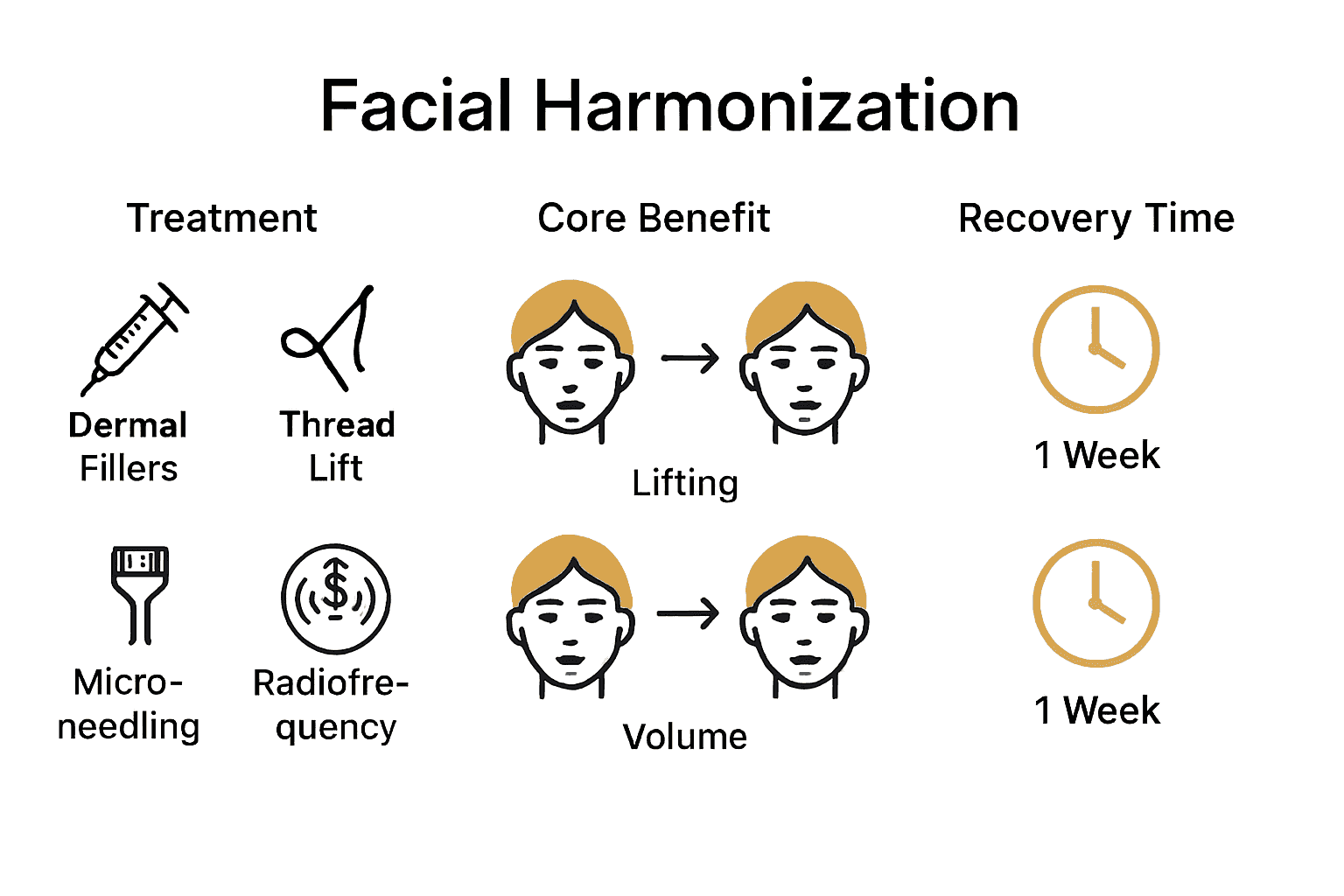
The Treatment Process and Expected Outcomes
Facial harmonisation treatments follow a meticulously structured process designed to deliver personalised, natural-looking results. According to government research on non-surgical cosmetic procedures, the journey begins with a comprehensive initial consultation that explores the patient’s aesthetic goals, facial anatomy, and individual concerns.
The typical treatment process involves several key stages:
- Comprehensive Consultation: In-depth assessment of facial structure and aesthetic objectives
- Customised Treatment Planning: Tailored approach matching individual facial characteristics
- Precise Treatment Application: Minimally invasive techniques targeting specific areas
- Immediate and Progressive Results: Gradual enhancement of facial harmony
- Follow-up and Fine-tuning: Ensuring optimal aesthetic outcomes
Facial Contouring Explained: Methods, Safety, Results highlights that expected outcomes vary based on individual factors, but generally include improved facial symmetry, refined contours, and a more balanced appearance. The treatments are designed to enhance natural features rather than dramatically alter one’s look. Patients typically experience subtle yet transformative results, with minimal downtime and a natural-looking rejuvenation that preserves individual character and expressiveness.
Safety, Medical Standards, and UK Regulations
Facial harmonisation treatments in the UK are subject to stringent medical standards and evolving regulatory frameworks designed to protect patient safety and ensure high-quality aesthetic care. The UK government is actively working to implement comprehensive licensing procedures for non-surgical cosmetic procedures, reflecting a commitment to maintaining professional standards and patient protection.
Key safety considerations for patients include:
- Practitioner Qualifications: Verifying medical credentials and specialist training
- Treatment Transparency: Comprehensive pre-treatment consultations
- Informed Consent: Detailed explanation of potential risks and expected outcomes
- Professional Oversight: Adherence to medical regulations and best practices
- Continuous Professional Development: Regular skills and knowledge updates
Understanding Safe Cosmetic Treatments for Facial Aesthetics emphasizes that patients should prioritize treatments performed by medically qualified professionals who follow evidence-based practices. The NHS recommends thorough research and cautious approach when considering aesthetic treatments, highlighting the importance of choosing practitioners who maintain the highest standards of professional conduct and patient care. By selecting practitioners who are committed to safety, transparency, and continuous learning, patients can confidently pursue facial harmonisation treatments with minimal risk.
Potential Risks, Recovery, and Common Mistakes
Facial harmonisation treatments, while generally safe, require patients to understand potential risks and navigate the recovery process with informed care. Government research highlights that non-surgical cosmetic procedures carry specific considerations that patients must carefully evaluate before proceeding with treatment.
Potential risks and important recovery considerations include:
- Temporary Swelling: Normal physiological response to treatment
- Potential Bruising: Mild discoloration at treatment sites
- Infection Risk: Minimal when performed by qualified professionals
- Asymmetry: Rare occurrence with experienced practitioners
- Allergic Reactions: Uncommon but possible with certain injectables
Complete Guide to Aesthetic Medicine in London recommends that patients avoid common mistakes such as seeking treatments from unqualified practitioners, neglecting aftercare instructions, or having unrealistic expectations. The most critical errors patients make include pursuing multiple aggressive treatments simultaneously, failing to disclose full medical history, and not following precise post-treatment care protocols. Successful facial harmonisation depends on a collaborative approach between the patient and a medically qualified professional, emphasizing communication, realistic goals, and meticulous adherence to recommended recovery guidelines.
Discover Your Natural Beauty with Expert Facial Harmonisation
Navigating the world of facial harmonisation can feel overwhelming when you seek subtle, natural results that truly reflect your unique features. Many women struggle with concerns about asymmetry, volume loss, and maintaining authentic expressions. At Monaz Clinic, we understand these challenges and focus on creating personalised treatment plans that enhance your natural balance with the utmost precision and care. Our approach uses trusted techniques such as dermal fillers and muscle relaxing injections to restore harmony without drastic changes.
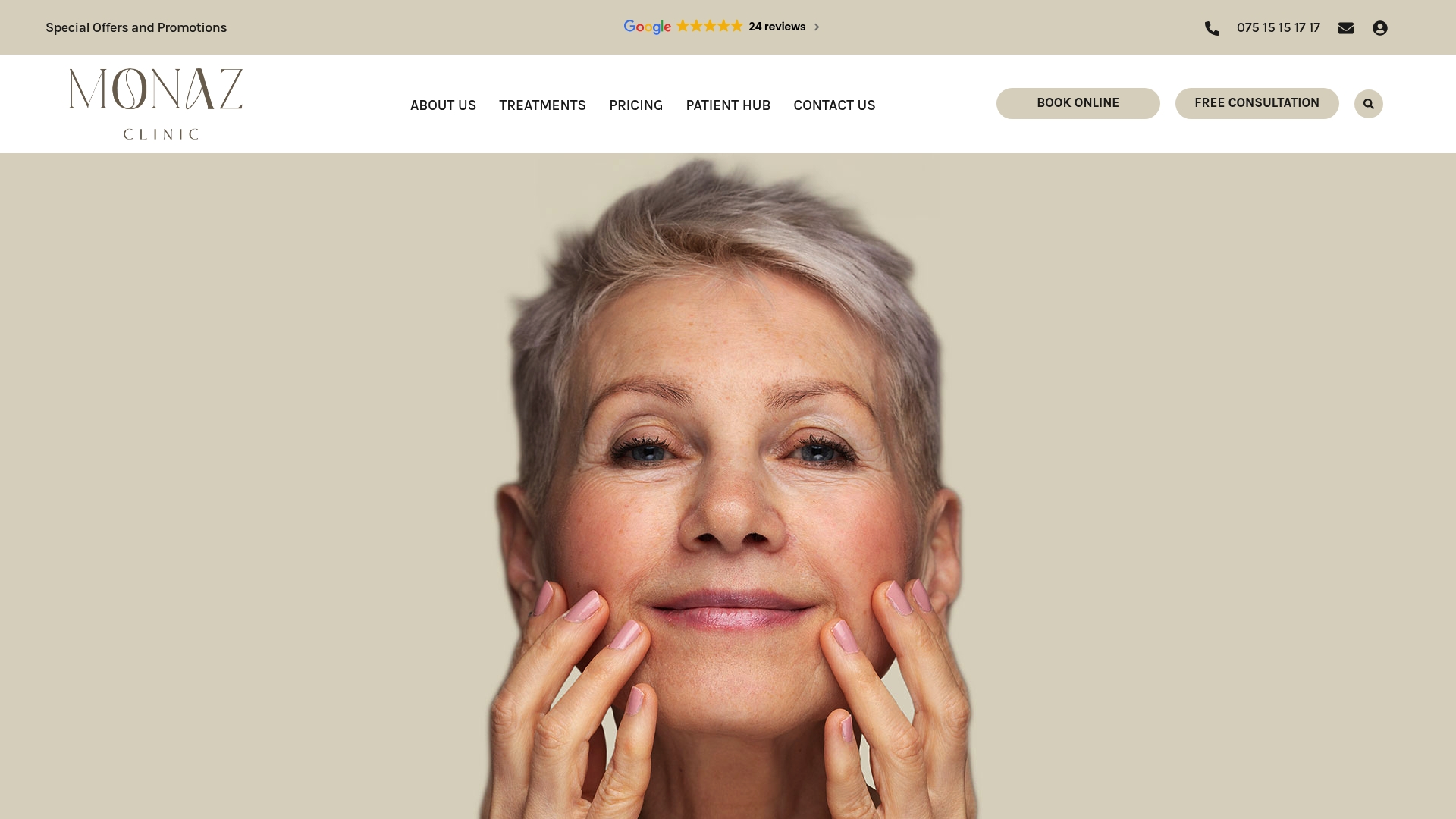
Ready to embrace a more balanced and radiant you? Explore our collection of insightful tips to prepare yourself for your facial aesthetics journey. Connect with our expert team at Monaz Clinic located in Harley Street, Central London by visiting our website today. Book a complimentary consultation where you will be listened to, guided by medically qualified professionals, and supported every step of the way in your transformation.
Frequently Asked Questions
What is facial harmonisation?
Facial harmonisation is an aesthetic approach focused on creating balanced and natural-looking facial proportions to enhance an individual’s unique features, using treatments that preserve natural expressions.
What are the types of non-surgical facial harmonisation treatments?
The primary non-surgical treatments include dermal fillers, thread lifts, microneedling, radiofrequency treatments, and muscle relaxing injections. Each technique targets specific aesthetic concerns with minimal downtime.
What does the treatment process for facial harmonisation involve?
The treatment process typically includes a comprehensive consultation, customised treatment planning, precise application of techniques, observation of immediate and progressive results, and follow-up for fine-tuning to achieve optimal outcomes.
What are the potential risks associated with facial harmonisation treatments?
Potential risks include temporary swelling, bruising, infection, asymmetry, and allergic reactions. It’s essential to discuss these with a qualified professional before proceeding with treatment.
